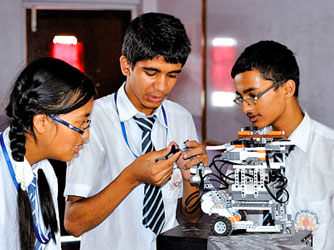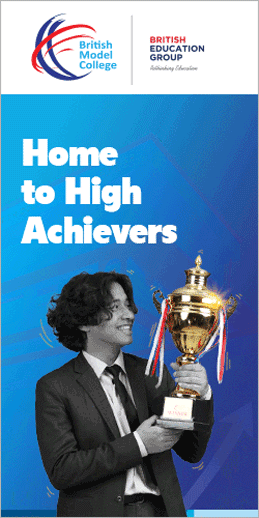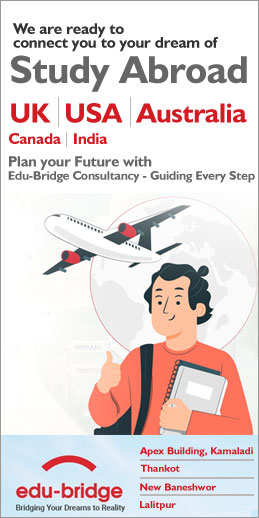Robotics for humanitarianism

The engineering department of Trinity College in Connecticut, USA has been working on a robotics program with a humanitarian focus. As part of the program, students build and program robots that can be applied in humanitarian fields like helping the disabled and the elderly.
In 2010, two Nepali students, Binay Poudel and Sarthak Khanal from Trinity College were awarded the prestigious Davis Award for Peace.They used the fund to conduct a robotics workshop in Haifa, Israel in coordination with Madatech, Israeli National Museum of Science and Technology.
The program aimed at providing an environment for Hebrew speaking and Arab speaking students to work together as a team and understand each other’s culture.
As continuation and part of the same project, a six week long robotics workshop was organized at Learning Realm International (LRI) School in Kalanki with the aim of developing a household assistance Robot, for the physically challenged and the elderly.
The final competition and closing ceremony of the program with the theme, ‘Robotics For Peace, 2011’ event was held at the LRI School premises on August 27.
Tashi Genden, one of the co organizers of the program and a volunteer, also a student at Trinity College, had come along with his friends to assist in this project.
He informed that this particular workshop was funded by the Engineering Department of Trinity College in Connecticut, USA, which is headed by Professor David Ahlgren. The Connecticut Council of Developmental Disabilities was an important advisor of the event.
“For the workshop, we chose twenty students from the school itself and divided them into five teams. We taught them to assemble robotic kits at the LRI physics lab itself,” said Genden.
He further added that he along with four of his friends, all of them whom are engineering students taught students about programming the robots.
This is the first humanitarian robotics project of this kind in Nepal. “The fact that the participants of this program are grade nine and ten students make this program an opportunity for young students to experience a unique blend of technology and social service,” added Genden.
At the beginning of the program ‘Robowaiter’ competition was held. The numbers of participants at the program were twenty and the numbers of competing teams were five and each team got five trials.
Each team had to place their robot in a simulated kitchen area. It was of 8.5ft by 8.5 ft arena. The robot then grabbed a plate from a table and delivered it next to a doll representing a disabled person and then returned to its starting position. The robots had to do that without any external control.
The teams were evaluated based on the number of tasks completed by their robots and the total time taken.
After the competition, a prize distribution ceremony was held. The winners of the competition were the team of Priya Shree KC, Kiran Pun, Anshu Singh and Ranjan Khanal of grade nine and ten.
source:republica(2011),"Robotics for humanitarianism ", republica, 28 August 2011
Posted on: 2011-08-30































